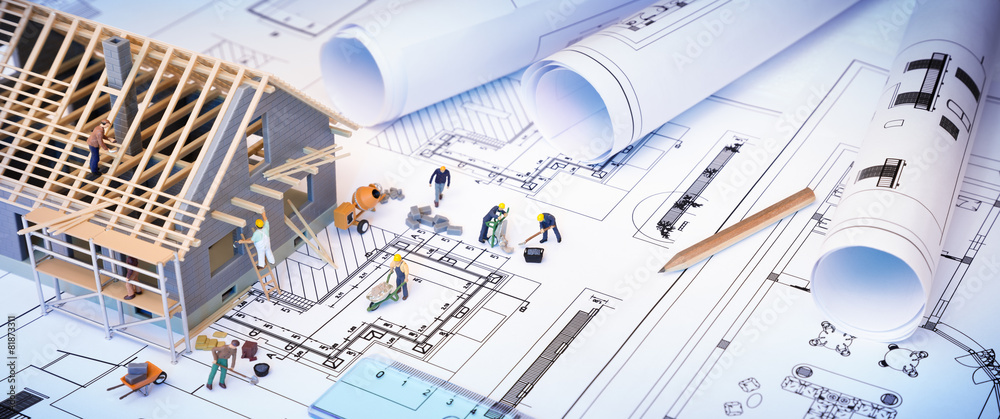
Let’s face it—construction is a massive juggling act. There are timelines, budgets, materials, and teams to manage. It’s easy to see why projects can slip through the cracks or spiral out of control. But here’s the good news: we’re living in the era of machine learning (ML), and it’s about time the construction industry caught on.
At 3 Dot Digital, we’ve seen first-hand how ML can turn chaos into streamlined efficiency. Gone are the days of guesswork and manual tracking. Now, with the right data and ML algorithms, your projects can run smoother, faster, and with fewer headaches. It’s not just about tech for tech’s sake—it’s about creating a smarter, more efficient way to build.
Let’s dive into how ML is reshaping the construction industry, making everything from predictive maintenance to resource management a breeze, and how you can start applying this game-changing tech to your next project.
So, what is ML, exactly? In simple terms, it’s a branch of AI where computer systems learn from data—improving over time without the need for human reprogramming. It’s like giving your project a mind of its own (minus the scary robot takeover vibes). In construction, ML means you can automate the boring stuff, analyse massive sets of data, and get solid predictions that help you make better decisions faster.
Think about all the data your project generates: reports, material orders, worker logs. ML takes that sea of information and fishes out the insights you’d never catch on your own. Instead of scrambling to keep things running smoothly, ML lets you plan ahead—cutting down on delays, mistakes, and costly rework.
Here’s the cool part: ML isn’t just a buzzword. It’s already transforming the way projects are run. Here’s how ML is actually making a difference in the day-to-day grind of construction:
1. Predictive Maintenance: We’ve all been there—machinery breaks down at the worst possible moment. But with ML, you can predict when your equipment is about to fail before it happens. Algorithms analyse patterns and usage data to flag potential problems, allowing you to schedule maintenance at just the right time. Fewer breakdowns mean fewer delays and less cost blowouts.
2. Optimised Scheduling: Keeping things on schedule is tough. But ML can take your past project data, learn from it, and spit out optimised timelines that adjust in real-time. That means when unforeseen events—like bad weather—pop up, your schedule shifts automatically, keeping you on track.
3. Resource Management: Materials not showing up? Over-ordering and wasting cash? ML can forecast exactly when and where resources are needed. No more running out of supplies or overstocking—ML nails down what you need when you need it.
4. Quality Control: Catching mistakes early is crucial. ML uses cameras, sensors, and data to monitor quality throughout your project. It flags things like cracks, misalignments, or material inconsistencies before they become bigger issues. Fewer reworks, better results.
5. Safety Monitoring: Safety’s a big deal, and ML is stepping up here, too. ML can use wearables, cameras, and sensors to monitor worker behaviour and project conditions, identifying risky patterns before they lead to accidents. You get real-time alerts to nip safety issues in the bud.
Let’s talk about why this all matters. Why should your firm adopt ML? What’s in it for you? Well, for starters, productivity shoots up. ML lets you automate the repetitive, time-sucking tasks that no one likes doing anyway. Your team gets to focus on the creative, high-value work that drives the project forward.
Cost savings are another huge bonus. ML’s predictive powers help you avoid costly downtime, minimise waste, and optimise your budget. When you’re not constantly battling breakdowns or fixing errors, you save big—both time and money.
Then, there’s the decision-making edge. ML turns raw data into actionable insights, letting you plan proactively. Whether it’s predicting weather impacts or flagging equipment failures, ML arms you with the info you need to make smart choices—fast.
Ready to get started? Implementing ML doesn’t need to be a daunting task. You just need a strategy. Here’s how you can start:
1. Identify Key Areas: Where can ML make the biggest impact? Is it in scheduling, resource management, or maybe predictive maintenance? Identify the areas where ML will solve the biggest pain points.
2. Collect Good Data: ML thrives on data, but only if it’s good data. Start collecting accurate, high-quality information from past projects. Things like equipment logs, weather patterns, and material deliveries are gold for ML.
3. Choose the Right Tools: Not all ML tools are created equal. Look for platforms that fit your needs. Some tools specialise in maintenance, while others excel at scheduling or resource optimisation. Get the right tool for the job.
4. Train Your Team: This tech is only as good as the team using it. Invest in training your crew on how to use ML tools effectively. Make sure everyone’s on board and understands how these tools will make their jobs easier.
5. Start Small, Then Scale: Don’t dive into the deep end. Choose a small project to test your ML solution. Learn what works, what doesn’t, and refine the process. Once you’ve nailed it, roll it out across bigger projects.
Machine Learning is no longer some far-off future tech—it’s here, and it’s transforming the way construction projects are managed and delivered. From predictive maintenance to resource management and safety monitoring, ML is delivering better outcomes for engineering, architecture, and construction firms in Australia and beyond.
Here at 3 Dot Digital, we’re all about helping you harness the power of ML to boost efficiency and cut down costs on your projects. Whether you’re looking to start small or go all-in on a full-scale rollout, we’ve got the know-how to make it happen.
Let’s work together to build a future where your construction projects run smoother, smarter, and more efficiently with ML. Ready to make the leap? Get in touch today!